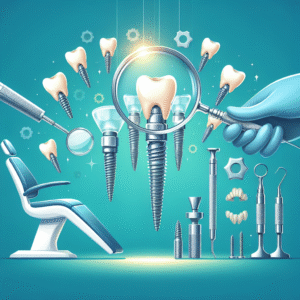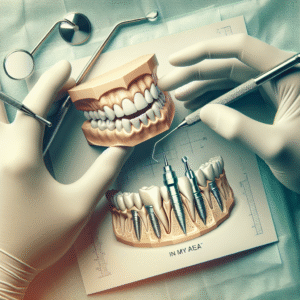All-on-4 Dental Implant Procedure: Eating with Confidence Again
For individuals suffering from extensive tooth loss or severe dental decay, the All-on-4 dental implant procedure offers a revolutionary solution to restore both function and aesthetics. Unlike traditional dentures, which can slip or cause discomfort, Full-Arch Dental Implants provide a permanent, stable foundation for prosthetic teeth. One of the most significant concerns for patients considering this treatment is how it will affect their ability to eat. This article explores the All-on-4 procedure, its benefits for eating, and how it compares to alternatives like Implant-Supported Dentures and Zygomatic Implants.
Understanding the All-on-4 Dental Implant Procedure
The All-on-4 technique involves placing four titanium implants in the jawbone to support a full arch of prosthetic teeth. This method is particularly advantageous for patients with significant bone loss, as it often eliminates the need for Bone Grafting for Dental Implants. The strategic angulation of the implants maximizes contact with available bone, ensuring stability without extensive surgical preparation.
One of the standout features of this procedure is the Teeth-in-a-Day / Same-Day Implants concept, where patients receive a temporary prosthesis immediately after surgery. This allows them to leave the dental office with functional teeth the same day, significantly improving their quality of life while the implants integrate with the bone.
How the All-on-4 Procedure Improves Eating Function
1. Stability and Bite Force Restoration
Traditional dentures rely on adhesives or suction to stay in place, often leading to slippage while chewing. In contrast, Full-Arch Dental Implants are anchored directly into the jawbone, mimicking the stability of natural teeth. This secure fit allows patients to bite and chew with nearly the same force as they would with natural teeth.
Studies show that implant-supported prostheses restore up to 70-80% of natural bite force, whereas conventional dentures only provide about 20-30%. This means patients can enjoy a wider variety of foods, including tougher items like steak, raw vegetables, and nuts, without fear of discomfort or instability.
2. No More Dietary Restrictions
Many denture wearers avoid certain foods due to fear of dislodgment or difficulty chewing. Sticky foods like caramel, hard foods like apples, and fibrous meats often become off-limits. With All-on-4 implants, these restrictions are lifted. The implants distribute chewing forces evenly, reducing pressure on the gums and preventing sore spots.
Patients report a dramatic improvement in their ability to eat foods they previously avoided, leading to better nutrition and overall health.
3. Enhanced Taste and Sensory Experience
Traditional upper dentures cover the palate, which can diminish the sense of taste and temperature perception. Since Implant-Supported Dentures in the All-on-4 system do not require a bulky acrylic plate, the palate remains exposed. This allows for a more natural eating experience, with improved ability to savor flavors and detect hot or cold foods.
Comparing All-on-4 to Other Implant Solutions
All-on-4 vs. Traditional Implant-Supported Dentures
While both options provide superior stability compared to removable dentures, traditional Implant-Supported Dentures often require six to eight implants per arch. This means more surgery, higher costs, and longer healing times. The All-on-4 approach reduces the number of implants needed while maintaining excellent functionality.
All-on-4 vs. Zygomatic Implant
Alternative Implant Solutions
For patients with extreme bone loss in the upper jaw, Zygomatic Implants may be recommended. These longer implants anchor into the cheekbone (zygoma) rather than the jawbone, bypassing areas of insufficient bone density. However, this procedure is more complex and may not be necessary for all patients. The All-on-4 technique often provides sufficient support without the need for zygomatic placement, making it a less invasive option for many.
The Role of Bone Grafting in Dental Implants
In cases where bone density is too low for standard implants, Bone Grafting for Dental Implants may be required. However, this adds months to the treatment timeline while the graft integrates. The All-on-4 system’s angled implants frequently avoid the need for grafting, allowing for faster treatment and immediate functionality.
What to Expect After the Procedure
Immediate Post-Op Diet
Following Teeth-in-a-Day / Same-Day Implants surgery, patients should stick to a soft-food diet for the first few weeks to allow healing. Recommended foods include:
- Mashed potatoes
- Smoothies
- Yogurt
- Scrambled eggs
- Blended soups
As the implants fuse with the bone (a process called osseointegration), patients can gradually reintroduce firmer foods.
Long-Term Eating Habits
Once fully healed, most patients can eat almost anything they could with natural teeth. However, it’s advisable to avoid excessively hard or sticky foods that could damage the prosthetic teeth over time. Regular dental check-ups ensure the implants remain in optimal condition.
Conclusion
The All-on-4 dental implant procedure transforms the lives of those with missing teeth by restoring the ability to eat confidently and comfortably. With benefits like improved stability, no dietary restrictions, and a natural feel, it’s no wonder this treatment is preferred over traditional dentures. Whether compared to Implant-Supported Dentures, Zygomatic Implants, or cases requiring Bone Grafting for Dental Implants, the All-on-4 method stands out for its efficiency and effectiveness.
If you’ve been struggling with tooth loss and want to enjoy meals without limitations, consult a dental implant specialist to see if All-on-4 is the right solution for you.
Frequently Asked Questions
FAQ: All-on-4 Dental Implant Procedure Eating
Q1: Can I eat normally after getting All-on-4 dental implants?
A1: Yes, but initially, you should stick to soft foods. As you heal, you can gradually reintroduce firmer foods, eventually enjoying most of your favorite meals.
Q2: How soon after the procedure can I start eating solid foods?
A2: Most patients can begin eating soft solids within a few days, but full recovery and the ability to eat harder foods may take several weeks to a few months.
Q3: Are there any foods I should avoid permanently with All-on-4 implants?
A3: While All-on-4 implants are durable, it’s best to avoid extremely hard or sticky foods (like hard candy or caramel) to prevent unnecessary strain.
Q4: Will my eating habits change long-term with All-on-4 implants?
A4: No, once fully healed, you should be able to eat almost anything comfortably, just like with natural teeth, though mindful chewing is always recommended.




